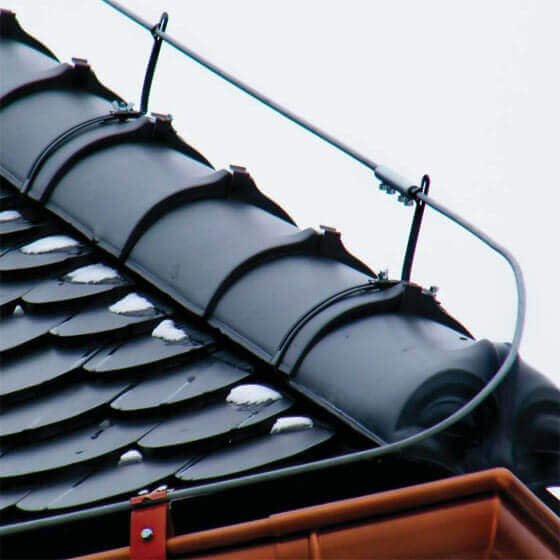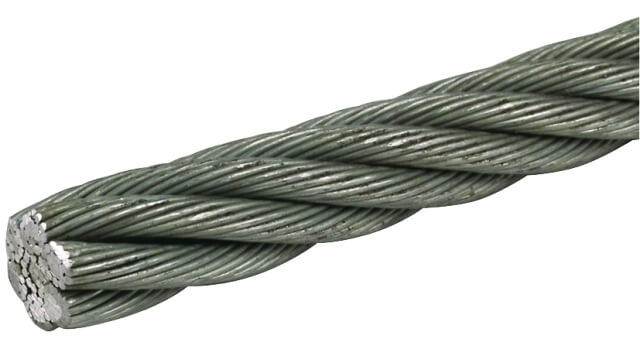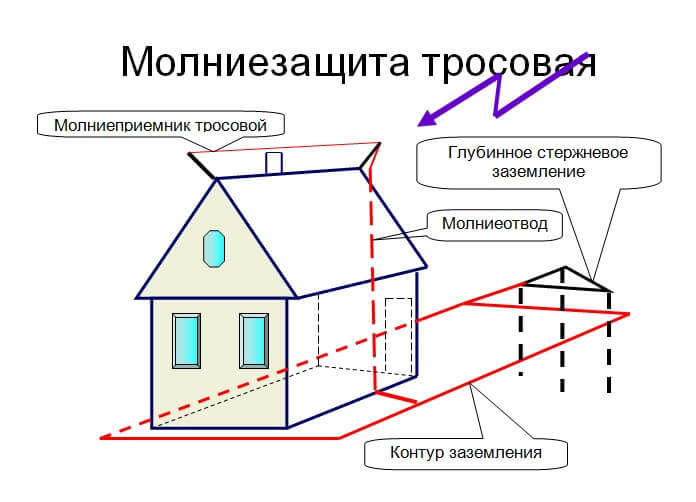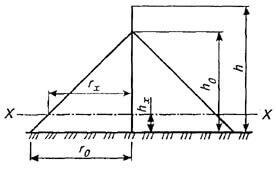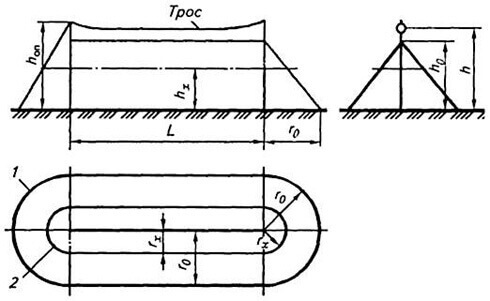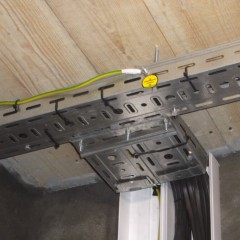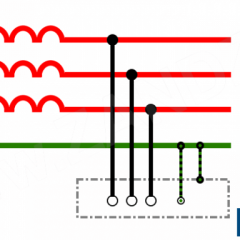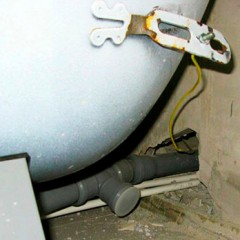How to organize cable lightning protection at home
Definition
Lightning protection of any type consists in the erection of metal structures on the roof or near the building in order to divert a lightning strike into the ground. It follows that lightning protection is connected to the ground electrode. In simple words, its purpose is to protect the structure, people and electrical equipment.
Cable lightning protection is used on long roofs of residential buildings and other types of buildings, when the pin can not be erected for some reason. The reason for this may be the inability to erect high masts for a pin lightning rod. However, the length of the building does not play a key role. A cable lightning rod can be installed on the roof of a cottage or a small summer residence. In the photo you can see what cable lightning protection looks like on the roof of the house.
Compared with a pin system of lightning removal, the cable lightning protection protects a large area. This is considered a more effective solution. On some roofs, it is easier to extend the cable than to put a pin. At the same time, the lightning rod grid system retains an even larger area than the cable system, however, the complexity of its installation does not always allow one to choose this option.
How to install it
Stretch along the roof steel cable with a cross section of at least 35 square meters. mm. If it is not possible to find a cable of the desired length, it is connected, mooring with an overlap of 1.5 m or more.
The cable is stretched at a height of 0.5 m from the slate roof. For this, pins are mounted on the ridge, the cable itself is pulled between them. On the one hand, the cable is connected to a lightning rod, which removes a lightning strike into the ground, they use a steel wire or cable with a diameter of about 6-8 mm. It is better to connect it to the ground electrode by welding, while the cross section of the weld should exceed the cross section of the cable by 2-3 times.
The cable is attached to the masts with bolt clamps, if the cable is more than 15 meters long, additional masts are installed along the length so that it does not sag. They should have rings or eyes for attaching lightning protection.
The grinder is made as follows: three metal corners (sizes 50x50x5 or close) are driven into the ground to a depth of at least 2 meters. They are located at the vertices of an imaginary equilateral triangle. Corners are interconnected by welding. To do this, use a metal strip (dimensions, for example, 40x4), which is welded to the corners. A cable from the roof is welded to the resulting ground electrode. The earthing switch is better attributed to a couple of meters from the house, but not less than five meters from the entrance to it.
Attention: Do not use the ground loop of the electrical equipment of the house to connect cable and other types of lightning rods to it. It is better to make two circuits. To equalize the potentials, they are usually combined among themselves.
The general scheme of cable lightning protection is presented in the figure below:
What are the calculations
Cable protection can consist of more than one cable located in the center of the building. The number and method of laying the cables is selected depending on the protected area. Let's look at what a typical calculation of cable lightning protection consists of.
The protection zone is called the area that adjoins the lightning conductor, provided with protection of varying degrees. Two types of protection are divided: above 99.5% (type of zone A) and above 95% (type of zone B). For the house, the second type is also sufficient (B).
For a lightning conductor with a height of up to 150 m (h) and the distance between the supports L, the protection zone is shown in the figure below. The upper part of the protection zone is limited by a straight line, which is drawn horizontally through the point of maximum deflection of the cable.
The dimensions of the protection zone are determined in this way. For zone type A:
h0 = 0.85 / h; r0 = (1.35 - 0.0025h) h;
rx = (1.35 - 0.0025h) (h - hx0.85);
For type B zone:
h0 = 0.92h; r0 = 1.7A; rx = 1.7 (h - hx / 0.92).
If hx and rx are known, then the height of a single lightning conductor for a zone of type B:
h = (rx + 1.85hx) / 1.7.
Explanation of symbols in the figure: 1 - border of the protection zone at ground level; 2 - the border of the zone is sewn at the level of hx.
The height of the supports is indicated by hop, it is selected taking into account the arrow of the deflection. For a steel cable, this value is 2 meters with a distance between supports (L) of up to 120 m and 3 meters, with a distance between them of 120 to 150 meters. Then the height of the supports is equal to the sum of the estimated height of the lightning rod with the accepted height of the deflection boom.
Finally, we recommend watching a video that clearly demonstrates the considered option of protection against lightning:
Lightning protection, of course, is needed at every building. In fact, unfortunately, in the private sector it is almost impossible to meet. Most often, it is found in enterprises, rather than residential buildings. We hope you understand how to organize a cable lightning protection of a private house or cottage.
Useful on the topic:

